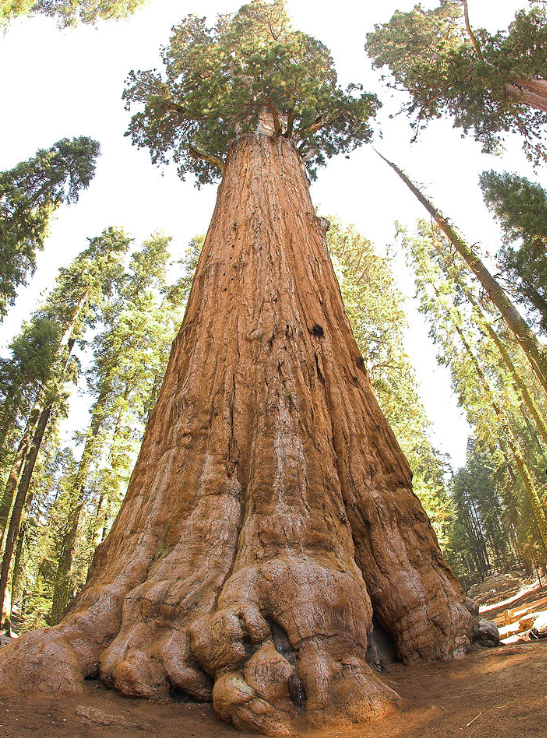
The giant sequoia, aka Sequoiadendron giganteum, has developed strategies, over time, to protect itself from external influences in its natural habitat of in the Sierra Nevadas. The bark of the tree ensures that it can survive a wildfire. The tree is also able to withstand damage from rock falls virtually unscathed.
Researchers Professor Dr. Thomas Speck from the Cluster of Excellence Living, Adaptive and Energy-autonomous Materials Systems (livMatS), Dr. Georg Bold and Max Langer of the Institute of Biology are working together to examine the Sequoia’s bark structure in detail for the first time. The University of Freiburg team in Germany has shown that the bark fibers form a three-dimensional network with cavities. This network distributes energy acting on the bark across the entire tissue. The results of this ground-breaking study have been published in the International Journal of Molecular Sciences.
Basically, what they found is that the outer bark of the sequoia tree contains many fibers. They are organized in fiber bundles. These fiber bundles cross over each other and are also layered on top of each other. This creates a three-dimensional netted structure. In between the fiber bundles are air-filled cavities.
Therefore, when a rock strikes the bark, these cavities compress. By compressing the hollow spaces and stretching the fiber network effectively distributes the energy evenly over the bark and protects the inside of the tree with the sensitive cambium that forms wood and bark. The bark, as a result, returns to its original state more of less. These same cavities also insulate the tree from the heat that is generated during wildfires.
Due to this structure, the sequoia tree’s bark behaves like an open-pored foam that is similar to the foam used in construction of cars and houses. Due to these findings, the researchers are, in conjunction with help from staff at the University of Stuttgart, developing a new type of lightweight concrete with bundles of hollow fibers. This concrete can be used to insult and protect buildings against earthquakes for example. Isn’t that neat?
We hope you enjoyed this article showcasing how nature can help us in creating new and better products to improve our lives. We look forward to your continued support of our blog. “See” you next week.











